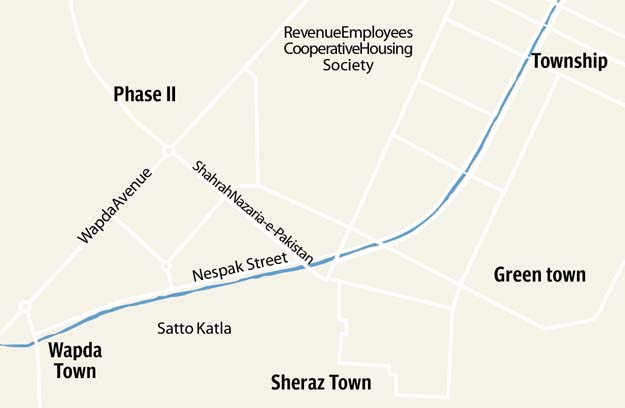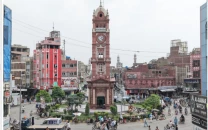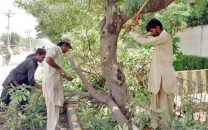Hazardous living: Around a drain, life in ruins
Ailments thrive among people living near Satto Katla nullah

Lahore Conservation Society President Kamil Khan Mumtaz was of the view that drains such as Satto Katla offer a natural outlet for water especially during rains. PHOTO: APP
The drain passes through Wapda Town and Township then enters the shanty area of Bahar Colony and Dhalla Flats. A well-built road on both sides of the drain, SMA Hai Road, has turned into a broken, narrow path over the years.
Locals have been waiting impatiently for some respite. Two brothers, Muhammad Ashraf and Muhammad Husain who have been living in the locality for the past 20 years, believe their dry eyes, sore throat and itchy skin are all caused by the drain.
A woman living in the area has a similar story. “I’ve been suffering from eye infections for the past 10 years,” said Meena Bibi, pointing to her pale yellow eyes while she tried to keep them open. “But I cannot afford treatment.”
Abdul Sattar says the most common ailments that affect more or less every child in the neighbourhood include gastroenteritis, skin rashes and fever.

The residents agree that most of these ailments are waterborne and have become a part of their life as the pipes meant to carry drinking water to the areas often supply the drain water instead.
“These blue pipes are obviously not in a good condition and the drain water often mixes with the drinking water at certain points,” Abdul says. “We don’t have any other option but to either utilise this scarce water resource.”
In case of shortage of water, the people take water from a nearby well. Abdul says no one from the health department has ever visited the area. “The only time we get to see people coming here, promising help, is during elections,” he added.
Illness, accidents
Locals claim the atmosphere around the drain has become so acidic that even their appliances stop working every once in a while. The effects of toxicity on humans are so rampant and obvious that one can easily spot them. People and kids roaming around the area have red blotchy skin.
Dr Izhar Ahmed, who works at Amna Rehman Clinical Lab, says out of about 60 patients the clinic receives every day, more than 80% suffer from gastroenteritis caused by contaminated drinking water.
He told The Express Tribune the clinic also often receives patients with eye ailments such as conjunctivitis, commonly known as pink eye which is an airborne infection.
He said other common diseases that occur in locals are rashes specifically in monsoon and sore throat due to air pollutants.
According to Dr Izhar, raw sewage contains viruses and fungi that can cause serious illnesses or even death in some cases. Contaminants such as solvents, carcinogens and pesticides are a major cause of asphyxiation and irritation in confined spaces.
Living in the area for the past 25 years, Arif Ali says children, motorcycles and rickshaws falling off the narrow, unguarded bridge on the drain are common incidents. “We hear at least 15 such cases every year. Recently a rickshaw fell off in the drain with women and children onboard. I don’t know how many survived,” Arif says. “The local government has recently done so much work on building new roads, I don’t understand why this area is ignored.”
Managing the channel
Around Rs204 million was spent by January 31, 2015 for the restoration of the original cross section (40 feet) of Satto Katla drain from Ferozpur Road to Peco Road, according to a report of Water and Sanitation Agency, Lahore.
Recently the government completed another project by rising embankments to avoid spilling of water from the drain during the monsoon season, but residents say that unless the drain is not closed from all sides their problems would not be resolved.
Lahore Conservation Society President Kamil Khan Mumtaz was of the view that drains such as Satto Katla offer a natural outlet for water especially during rains. “What was supposed to be beneficial for us has been turned into a constant threat as the channel has been choked by waste, reducing its water carrying capacity.”
Environmental Protection Department Managing Director Nasimur Rehman Shah said the department had filed a case regarding unchecked toxic disposal from Quaid-e-Azam Industrial Estate into the drain which has been critically polluting the Indus. The case has been languishing at environmental tribunal courts since almost three years.
“We are of the view that the best way to go about avoiding all these issues is by covering these drains but not before ascertaining the net capacity in context to maximum water drainage,” Shah says.
Published in The Express Tribune, October 22nd, 2016.






1675249047-0/image-(18)1675249047-0-208x130.webp)












COMMENTS
Comments are moderated and generally will be posted if they are on-topic and not abusive.
For more information, please see our Comments FAQ